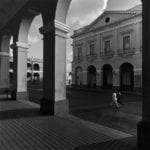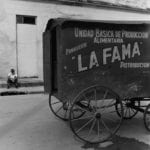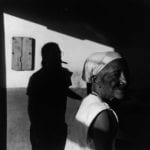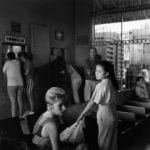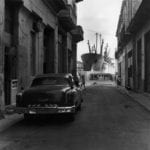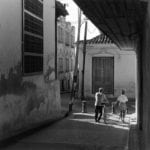March 2013
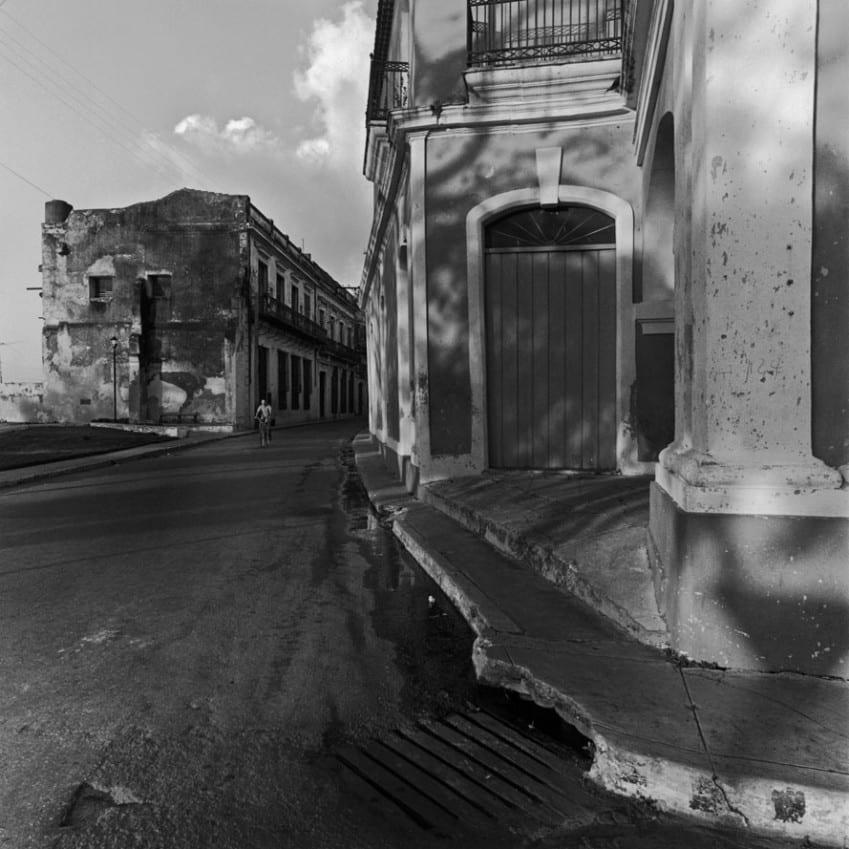
Artist’s Statement
(Excerpted from an interview with Mario Algaze by Dennis C. Graves, South x Southeast, November 2011)
Dennis C. Graves: The 50s and 60s were a time of revolution. Fifty-eight of the 192 countries in the United Nations joined between 1955 and 1965. Half of those were new nations throwing off the colonial yoke. Tell us about your early life and your family’s emigration out of turbulent Cuba.
Mario Algaze: I was 11-1/2 when Fidel Castro at age 32-1/2 came to power (January 1, 1959); and 13 when we left. My parents were both lawyers, well-to-do upper middle-class, and we lived in the Havana district of Miramar, where the Art Deco movement started in 1927.
Politically, we called ourselves progressive/socialist, but in some ways Castro’s idea of an egalitarian society became cloud-cuckoo. As is often the case with children, my memories are a little gauzy. But I think the revolution which overthrew Fulgencio Batista (b.1901-d.1973, in power 1933-1944 and 1952-1959) was supported by, or at least not contested by, a majority of Cubans. Batista came back into power in 1952, and he was a stinker. Loved the Italian mafia. Most corrupt and repressive dictator a major Caribbean island had seen since the guy in the Dominican Republic (Rafael Trujillo, b.1891-d.1961, in power 1930-1961), and until the guy in Haiti (François “Papa Doc” Duvalier, b.1907-d.1971, in power 1957-1971).
After a year and a half of Castro, in the summer of 1960, my father and I left (but not my mother). The grandfather I’m named after also left and went to Brazil. He’s buried in Copacabana, the suburb of Rio de Janeiro—a great place to be buried, if you have to be buried somewhere. My grandmother was more of a hardcore Castro supporter and didn’t want to leave; and so they separated. She’s buried in Cuba. My uncles were divided on the issue. After we left, our family home became a foreign embassy.
DCG: So rumor has it, when Eisenhower was president up in El Norte, and America was grinding out its postwar, conformist phase— you were not exactly a choir-boy, Norman-Rockwell pre-teen?
MA: I was a rebel without a cause. Not a good fit for military school, which I attended from 1953 until 1960. One day, probably in 1955, when I was eight years old, I took my father’s Packard for a little joyride. That son-of-a-bitch was the 1953 “Clipper” model, a competitor of Cadillac. It was a monster. Unbelievable. Somehow I was able to reach the floor boards. Otherwise I was a good student.
You want to know if I ever saw the triumphalist Fidel, with my own eyes? No, never did. But about a week after the revolution had been in power, say, January 10, 1959, I heard a sequence of horse gallopings. Went out onto the balcony of my house in Miramar. A ragtag procession was riding in on horseback from their rebel bases in the Sierra del Escambray Mountains. Holding the Cuban flag, one of them had red hair and a red beard. Someone said, “That’s Camilo Cienfuegos Gorriarán.” He was mysterious, like Che Guevara. Later that year (October 28, 1959), Camilo’s Cessna 310 disappeared over the ocean on a night flight from Camagüey to Havana. His body was never found. Foul play was the rumor, but that’s never been proven.
DCG: So among your extended family—not exactly unanimous resistance to Fidel, unlike other Cuban clans who found themselves in Miami or Panama. What would have happened if you had remained in Cuba—grow up a nice, indoctrinated Marxist-Leninist, listen to three-hour speeches, watch Khrushchev bring in missiles, and dine on the lush fruits of the trade embargo?
MA: From my knothole, property was not confiscated unless you were renting it out. I know this was not the case for overt enemies of the regime, and as time went on more private property was expropriated. We had our house, but it was getting tough for Father and Mother. Class warfare has its own timetable; I guess the premonition was that Fidel was filling his government with communists. Father died 1990-something, and is buried in Mexico. Mother died the year after, and I have her ashes.
DCG: As an expatriate who departed in the first wave of exiles, did you have diplomatic or consular trouble getting a visa to travel back to Cuba, in 1999-2000?
MA: Far from it … wasn’t even my idea. No trouble going back—in fact, I received a letter stamped from Cuba. The year was 1998. The return address said “La Casa de las Americas”, a cultural division of the Castro government. More than a year in advance, I was being invited on a 21-day visa to a symposium on photography, to be held December 1999-January 2000 in Havana. Clinton was prez then, and there was no travel impediment. So I made a deal: I’ll attend if you permit me to photograph anywhere I want on the island (except obvious national security installations). That meant someone rather high-up had to give me a letter so I could move around inside the country.
Also, if I was going to do this, I wanted to make photographs and have them for a permanent exhibition somewhere: you know, exile-boy goes back 39 years later. Got on a plane, but before leaving I lined up sponsors for thirteen photographs made into a limited edition of 112 prints each. Ended up, Leah Ollman (who writes the “Culture Monster” blog for the The Los Angeles Times) wrote the introduction.
DCG: So there you are, the cusp of the new millennium, a celebrated expatriate, exploring your native land, all alone?
MA: I found a driver to take me around the island. Five minutes out of town I was incognito. Came back with two bricks/40 rolls of 120 film. I was too busy shooting pictures and planning the logistics of getting around, so I didn’t visit the family cemetery. My aunt was still there in her same house, however. She was a diehard Castroite.
I’ve lived in the tropics all my life. The Tropic of Cancer latitude-line goes right over the top of Havana, hey. Such a good time to be taking pictures there—that miraculous, winter angle-of-the-sun. The best shooting light in the Caribbean is late November to late February.
Biography
Mario Algaze was born in Havana in 1947. At the age of 13, his family relocated to Miami, Florida. In 1970 Mario began a career in photography, a career which documented Latin and South American cultures, as well as celebrities and artists worldwide. In 1999 he returned to Cuba for the first time since leaving in 1960. The photographs he captured show us a contemplative and quiet side of life during this time. He resides in Miami, Florida.
Jerry Atnip
Jerry Atnip has a 38-year career as a commercial and fine art photographer. His images have been published in 40 countries, and since 2003, he’s held over 75 exhibitions and been presented with over 90 awards. He is also a teacher, workshop director, curator, juror, frequent lecturer and serves on the boards of several Arts &
Photography organizations, including Atlanta Celebrates Photography festival and Slow Exposures Photofestival. His work has been collected by museums, corporate and private collectors and he is an Exhibiting Member of The National Arts Club in New York.


